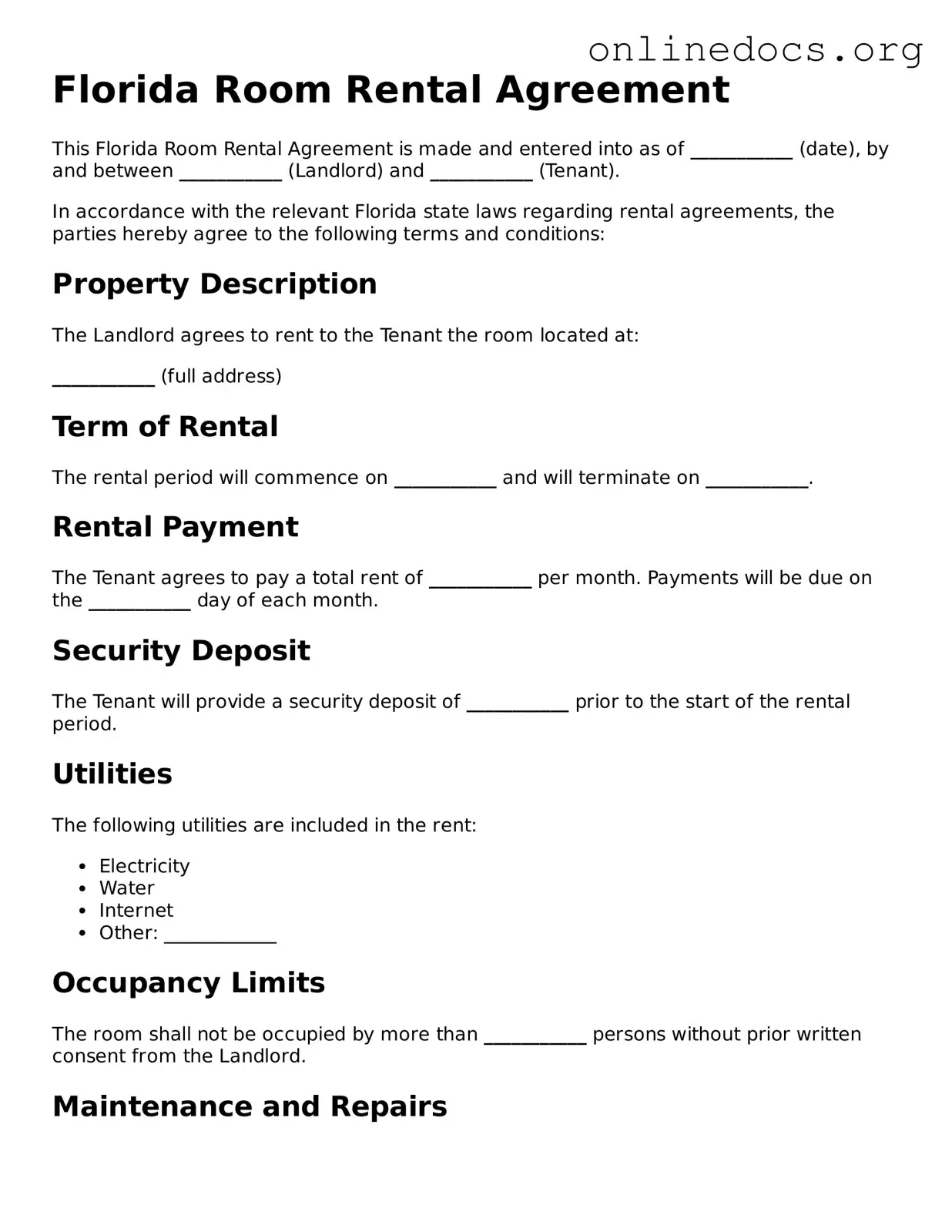The Florida Room Rental Agreement form shares similarities with the Lease Agreement. Both documents outline the terms and conditions under which a property is rented. They specify the responsibilities of both the landlord and tenant, including payment details, duration of the rental, and rules regarding the property. While a lease typically covers longer terms, both agreements serve the same purpose of legally binding the parties involved.
In order to ensure all legal aspects of a rental situation are thoroughly addressed, referring to resources like the legalformspdf.com can be invaluable, especially when verifying potential tenants' employment status, which may significantly influence rental agreements and decision-making in the leasing process.
Another similar document is the Sublease Agreement. This agreement allows a tenant to rent out their leased space to another person. Like the Room Rental Agreement, it includes details such as rental payments, duration, and property rules. Both documents protect the rights of the original tenant and the subtenant, ensuring that everyone understands their obligations.
The Rental Application is also comparable to the Room Rental Agreement. While the Rental Application is used to gather information from potential tenants, both documents ultimately aim to establish a rental relationship. The application collects personal details, rental history, and references, which can influence the terms set in the Room Rental Agreement once a tenant is selected.
The Month-to-Month Rental Agreement is another similar document. This agreement allows for more flexibility than a standard lease, as it can be terminated with short notice. Like the Room Rental Agreement, it outlines rental terms, payment, and responsibilities. Both agreements cater to individuals seeking temporary housing solutions.
The Rental Disclosure Statement is also relevant. This document informs tenants about specific aspects of the rental property, such as lead paint hazards or safety regulations. While it doesn’t serve as a rental agreement itself, it complements the Room Rental Agreement by ensuring that tenants are aware of important information regarding the property they are renting.
The Tenant Lease Addendum is another document that resembles the Room Rental Agreement. This addendum modifies the original lease by adding specific conditions or rules. It can cover topics such as pet policies or maintenance responsibilities. Both documents work together to clarify expectations and obligations for all parties involved.
Finally, the Commercial Lease Agreement is similar in that it governs the rental of a property, but specifically for business purposes. It includes terms about rent, property use, and maintenance. Like the Room Rental Agreement, it establishes a legal framework that protects both the landlord and the tenant, ensuring a clear understanding of the rental terms.
